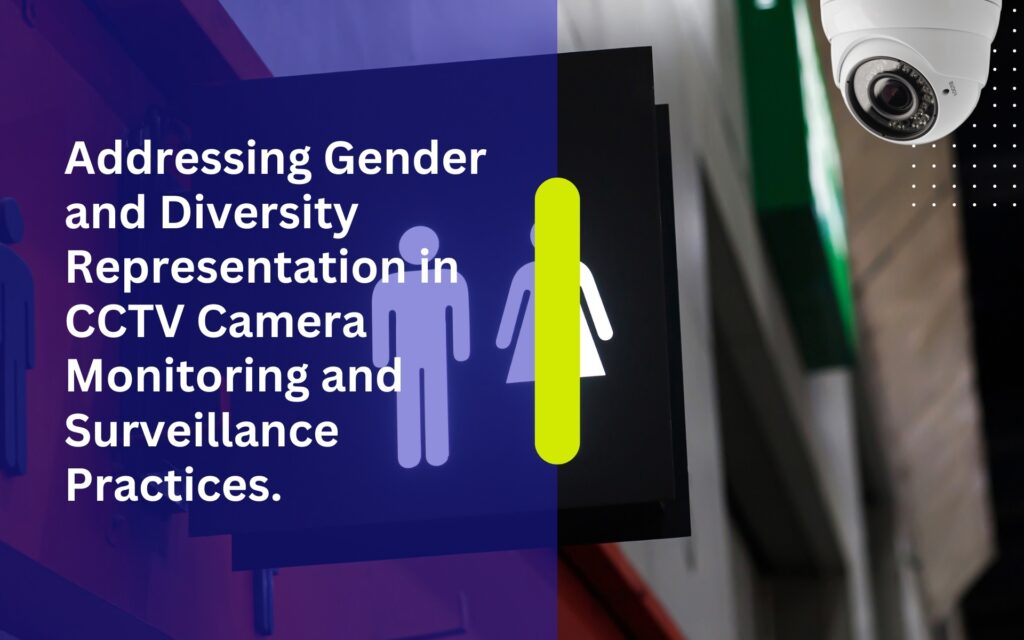Celebrating a Year of Growth and Success at InstallersPH IT Solutions. Introduction. As the year comes to a close, InstallersPH IT Solutions takes a moment to reflect on a journey defined by …
Addressing Gender and Diversity Representation in CCTV Camera Monitoring and Surveillance Practices.

Introduction
In the digital age, the proliferation of surveillance technologies, particularly Closed-Circuit Television (CCTV) cameras, has revolutionized security and monitoring systems worldwide. While these systems offer unparalleled capabilities in crime prevention and public safety, they also raise important questions about ethics, privacy, and representation. Among these considerations, the issue of gender and diversity representation in CCTV monitoring emerges as a crucial area for examination and improvement. In this comprehensive guide, we delve into the multifaceted dimensions of this issue, exploring its implications, challenges, and strategies for fostering inclusivity and equity in surveillance practices.
Understanding Gender and Diversity Representation in CCTV Monitoring
At its core, gender and diversity representation in CCTV monitoring refers to the fair and equitable portrayal and consideration of individuals from various gender identities, ethnicities, races, sexual orientations, and other diverse backgrounds within surveillance systems. This encompasses both the operators of surveillance technologies and the subjects under surveillance. Achieving meaningful representation in CCTV monitoring is not merely a matter of optics or political correctness; it is a fundamental aspect of ensuring the efficacy, fairness, and legitimacy of surveillance practices.
Historically, surveillance systems have been designed, implemented, and operated from a predominantly male and homogeneous perspective. As a result, these systems may perpetuate biases, reinforce stereotypes, and overlook the nuanced experiences of diverse populations. From biased algorithms in facial recognition software to discriminatory monitoring practices targeting marginalized communities, the ramifications of inadequate representation in CCTV monitoring are far-reaching and profound.
Challenges in Gender and Diversity Representation
Addressing the underrepresentation of gender and diversity in CCTV monitoring requires a nuanced understanding of the challenges at play:
1. Bias in Design
Surveillance technologies are not immune to the biases of their creators. From the selection of camera angles to the programming of facial recognition algorithms, design choices in CCTV systems can inadvertently perpetuate stereotypes and marginalize certain groups. For example, cameras positioned based on assumptions about typical gendered behaviors may overlook spaces where non-conforming individuals congregate.
2. Lack of Diversity Among Operators
The workforce responsible for operating and monitoring CCTV systems often lacks diversity, both in terms of demographic representation and lived experiences. Without adequate representation among operators, surveillance practices may fail to account for the perspectives and needs of marginalized communities, leading to disparities in monitoring and response.
3. Privacy and Consent Issues
Surveillance technologies raise significant concerns regarding privacy and consent, particularly when deployed in public spaces or workplaces. Individuals from marginalized or vulnerable groups may face heightened risks of surveillance, with limited recourse for protecting their privacy or asserting their consent. Without clear guidelines and consent mechanisms, CCTV monitoring can exacerbate existing power differentials and erode trust in surveillance institutions.
4. Discriminatory Practices
In some cases, CCTV monitoring is wielded as a tool for discriminatory practices, such as racial profiling or gender-based surveillance. Communities of color, LGBTQ+ individuals, and other marginalized groups are disproportionately targeted for surveillance, leading to feelings of alienation, fear, and distrust. These practices not only violate ethical principles but also perpetuate systemic inequalities and undermine the social fabric of communities.
Addressing Gender and Diversity Representation
To address the underrepresentation of gender and diversity in CCTV monitoring, proactive measures must be taken at multiple levels, spanning technology development, policy formulation, and workforce diversification. Here are some strategies for advancing equity and inclusion in surveillance practices:
1. Inclusive Design
Developers of surveillance technologies must prioritize inclusive design principles throughout the development lifecycle. This includes conducting thorough assessments of potential biases in algorithms, soliciting input from diverse stakeholders during the design process, and incorporating feedback mechanisms for ongoing refinement. By centering the needs and experiences of diverse users, surveillance technologies can be made more equitable, effective, and responsive to real-world challenges.
2. Diversity Training and Sensitivity Education
Organizations responsible for operating CCTV systems should implement comprehensive diversity training programs for their employees. These programs should go beyond mere compliance training to foster empathy, cultural competency, and awareness of unconscious biases. By equipping operators with the knowledge and skills to navigate complex social dynamics, organizations can enhance the quality and fairness of surveillance practices.
3. Community Engagement and Consultation
Engaging with local communities and stakeholders is essential for building trust and accountability in surveillance practices. Organizations deploying CCTV systems should actively seek input from community members, particularly those most affected by surveillance, and incorporate their perspectives into decision-making processes. By fostering dialogue and collaboration, organizations can co-create surveillance systems that reflect the values and priorities of the communities they serve.
4. Transparent Policies and Accountability Mechanisms
Clear and transparent policies governing CCTV monitoring are essential for safeguarding privacy, ensuring accountability, and upholding individuals’ rights. These policies should outline the purposes of surveillance, the criteria for data collection and retention, and mechanisms for addressing privacy concerns and complaints. Additionally, organizations should establish robust oversight mechanisms, such as independent review boards or ombudsman offices, to monitor compliance with these policies and hold accountable those responsible for misconduct or abuse.
5. Diversification of Workforce
Efforts to diversify the workforce responsible for CCTV monitoring are critical for promoting equity and inclusion in surveillance practices. Employers should adopt proactive recruitment strategies to attract candidates from underrepresented backgrounds, including women, people of color, LGBTQ+ individuals, and individuals with disabilities. Moreover, organizations should provide support for career advancement, mentorship, and training opportunities to ensure that diverse talent is retained and empowered within the workforce.
Conclusion
In conclusion, achieving gender and diversity representation in CCTV monitoring requires a concerted effort to address biases, foster inclusivity, and promote accountability across all aspects of surveillance practices. By embracing inclusive design principles, prioritizing diversity training and sensitivity education, engaging with communities, and implementing transparent policies and accountability mechanisms, organizations can create surveillance systems that are fair, effective, and respectful of individuals’ rights and dignity. Together, we can build a future where surveillance serves as a tool for promoting safety, justice, and social equity for all.
Related Articles
Notice to the Public: Holiday Vacation Advisory of InstallersPH IT Solutions. Introduction. InstallersPH IT Solutions is committed to providing reliable and professional IT services to all our valued clients and partners. As …
The On-the-Job Training Experience of Sherlyn Linao. Introduction On-the-Job Training (OJT) is an essential part of a student’s academic development, providing practical exposure to real workplace environments. It allows interns to apply …



